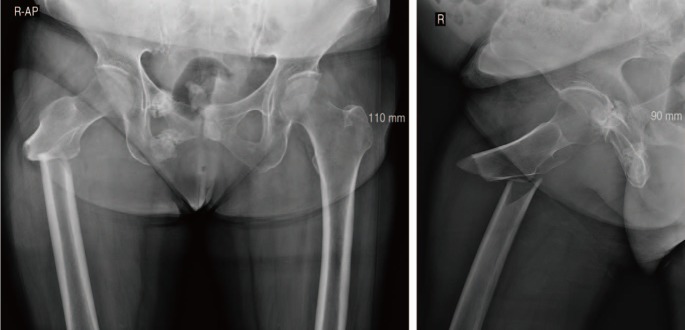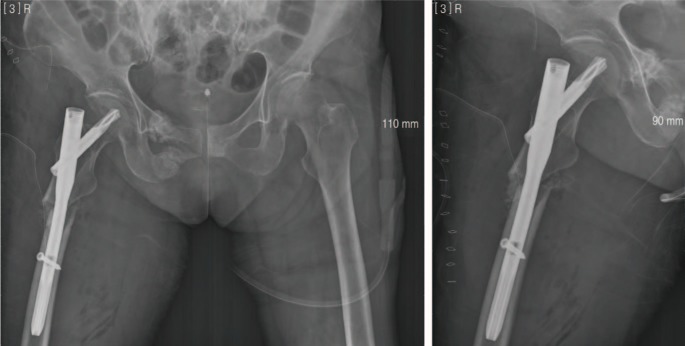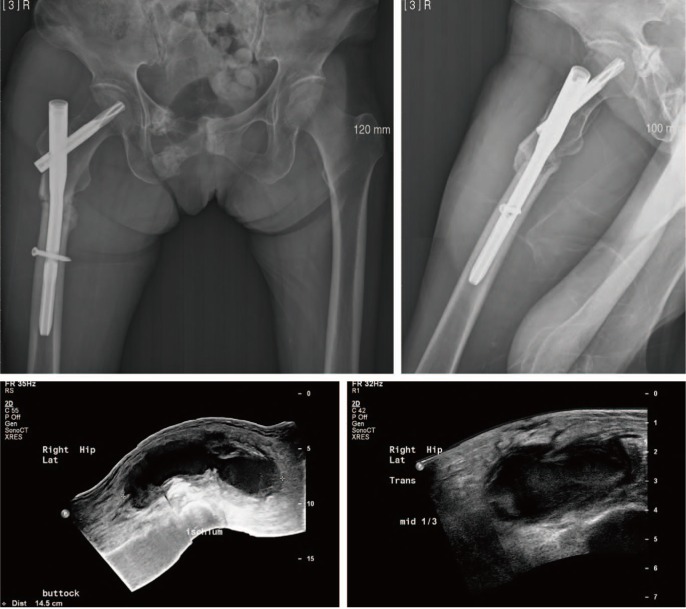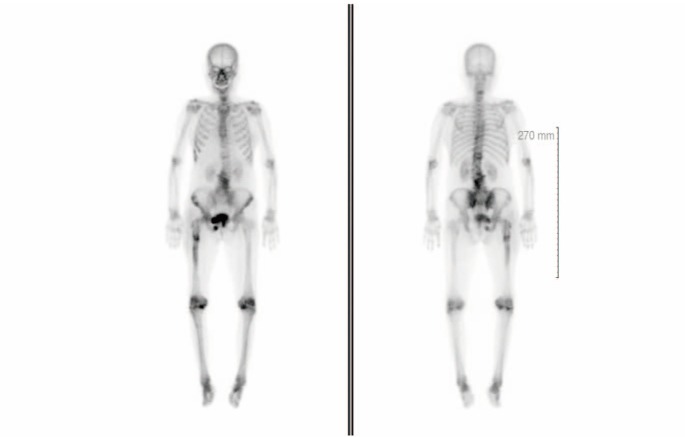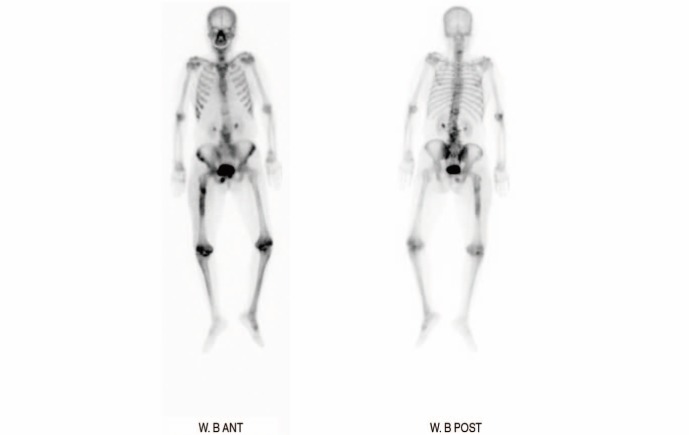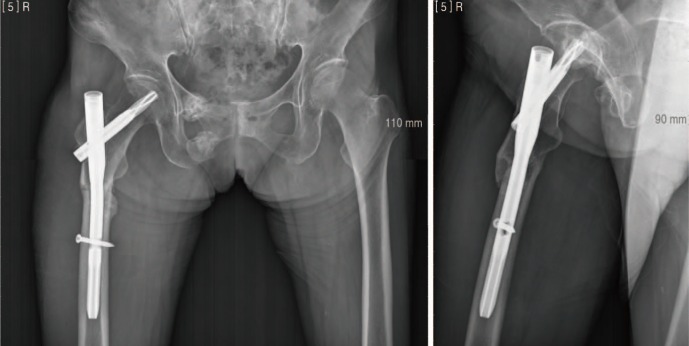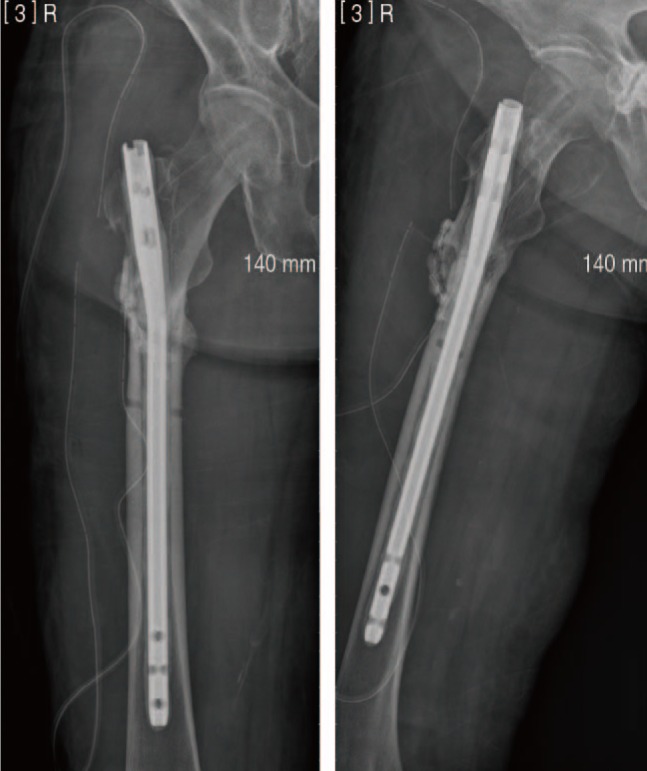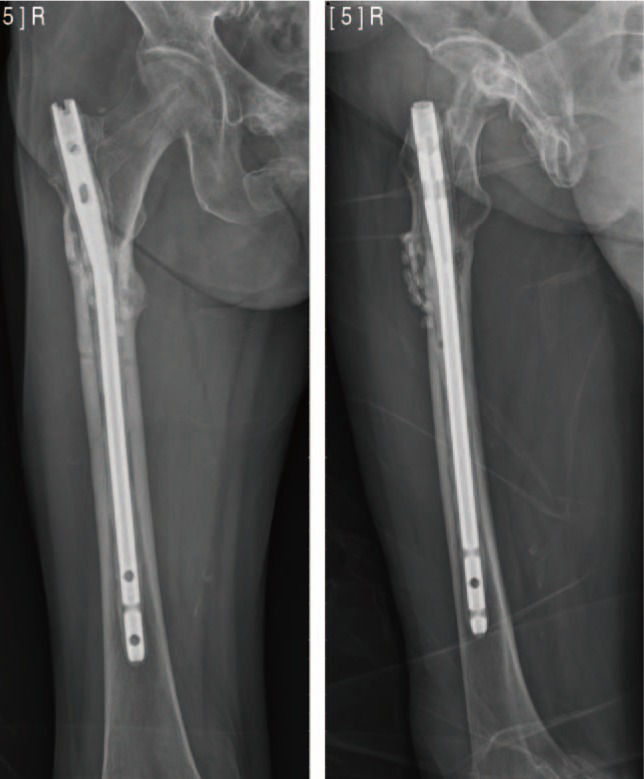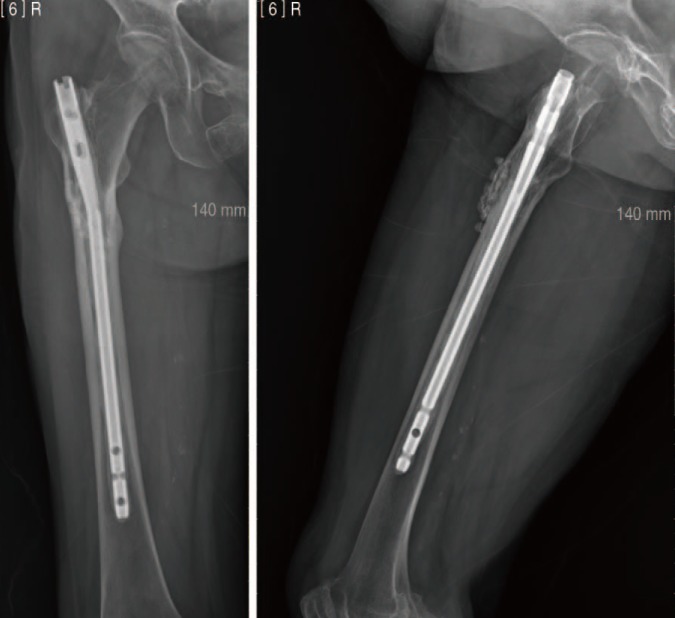Hip Pelvis.
2018 Mar;30(1):45-52. 10.5371/hp.2018.30.1.45.
Treatment of Proximal Femur Osteomyelitis Occurred after Proximal Femoral Nail Antirotation Fixation, with Antibiotic Cement-coated Tibia Intramedullary Nail: A Case Report
- Affiliations
-
- 1Department of Orthopedic Surgery, The Catholic University of Korea, Bucheon St. Mary's Hospital, Bucheon, Korea. keeleehip@gmail.com
- KMID: 2408185
- DOI: http://doi.org/10.5371/hp.2018.30.1.45
Abstract
- Antibiotic cement-coated intramedullary nails maintain a locally high antibiotic concentration while contributing to bone stability. We present a case of femoral subtrochanteric fracture in a patient with an infected nonunion who was successfully treated for an infection and nonunion using an antibiotic cement-coated tibial intramedullary nail. A 79-year-old woman with a right femoral subtrochanteric fracture underwent internal fixation using proximal femoral nail antirotation (PFNA). She developed osteomyelitis with nonunion at the surgical site 10 months postoperatively. We decided to insert an antibiotic cement-coated tibial intramedullary nail. After coating the nail with bone cement mixed with antibiotics, bone fixation was achieved by inserting the nail at the site of the PFNA. The patient's symptoms improved, symptoms from the infection disappeared, and bone union was confirmed. Osteomyelitis occurred because of postoperative infection following a proximal femoral fracture. Antibiotic cement-coated tibial intramedullary nails are an effective option to treat patients with osteomyelitis of the femur and achieve bone union where nonunion persists with shallow a intramedullary femoral canal.
MeSH Terms
Figure
Reference
-
1. Patzakis MJ, Zalavras CG. Chronic posttraumatic osteomyelitis and infected nonunion of the tibia: current management concepts. J Am Acad Orthop Surg. 2005; 13:417–427. PMID: 16224114.
Article2. Zalavras CG, Patzakis MJ, Holtom P. Local antibiotic therapy in the treatment of open fractures and osteomyelitis. Clin Orthop Relat Res. 2004; (427):86–93.
Article3. Beals RK, Bryant RE. The treatment of chronic open osteomyelitis of the tibia in adults. Clin Orthop Relat Res. 2005; (433):212–217. PMID: 15805960.
Article4. Thonse R, Conway J. Antibiotic cement-coated interlocking nail for the treatment of infected nonunions and segmental bone defects. J Orthop Trauma. 2007; 21:258–268. PMID: 17414554.
Article5. Bharti A, Saroj UK, Kumar V, Kumar S, Omar BJ. A simple method for fashioning an antibiotic impregnated cemented rod for intramedullary placement in infected non-union of long bones. J Clin Orthop Trauma. 2016; 7(Suppl 2):171–176. PMID: 28053381.
Article6. Struijs PA, Poolman RW, Bhandari M. Infected nonunion of the long bones. J Orthop Trauma. 2007; 21:507–511. PMID: 17762489.
Article7. Riel RU, Gladden PB. A simple method for fashioning an antibiotic cement-coated interlocking intramedullary nail. Am J Orthop (Belle Mead NJ). 2010; 39:18–21. PMID: 20305835.8. Roche O, Zabée L, Sirveaux F, Villanueva E, Molé D. Treatment of septic nonunion of long bones: preliminary results of a two-stage procedure. J Bone Joint Surg Br Proc. 2005; 87-B:111–112.
- Full Text Links
- Actions
-
Cited
- CITED
-
- Close
- Share
- Similar articles
-
- Fixation of Infected Nonunion of Femur by a Kuntscher Nail Stuffed with Antibiotic Laden Bone Cement: A Case Report
- The Antibiotic Cement Coated Nail and Masquelet Technique for the Treatment of Infected Nonunion of Tibia with Bone Defect and Varus Deformity
- Removal Methods for Broken Proximal Femoral Nails Using Ball Tip Guide Wire: Technical Note and Two Cases Report
- Difficulty in Removal of a Femoral Intramedullary Nail: The Geometry of the Distal End of the Nail
- Bursting Fracture of the Proximal Femur during Insertion of Unreamed Femoral Nail for Femur Shaft Fracture: A Case Report

